
Holy Trinity Church, Washington
Washington, Tyne & Wear
Last Updated:
2 Sept 2024
Washington, Tyne & Wear
54.903107, -1.516799
Site Type:
Church, Place of Worship
Origin:
Status:
Extant
Designer (if known):
John & Benjamin Green
Listed Grade II

Washington’s Holy Trinity Church towers over the village like a medieval castle 🤩
Funnily enough, given its location it’s often mooted as being sited on a prehistoric enclosure, pagan temple, or a place of other spiritual significance. What we do know is that a church has sat here since at least the 12th century, though probably the Saxon era. In the 1110s it was part of Rannulf Flambard’s extensive lands. He also built Norham Castle on the Scottish borders, St Giles at Durham and countless others in his possession as Bishop of Durham.
The area changed hands over the centuries and the church underwent significant remodelling too. The Biddick family paid for a chantry in the 13th century, though this has all since vanished when our friends John & Benjamin Green make an appearance yet again. John and Benjamin designed some of the North East's most renowned buildings and are modestly overshadowed by contemporaries like Dobson. The original church had two side aisles, a large south porch and a very typical medieval tower. The nave 18 paces long also.
The original church had two side aisles, a large south porch and a very typical medieval tower. The nave 18 paces long also.
In 1832 the (possibly) Saxon church was demolished thanks to supposed structural insecurity. John Green designed the new church, and was opened in the year after at a cost of £1000. What we see today is partly that construction as well as subsequent renovations in the 1880s and the 20th century.
The old lords of Washington, and henceforth George Washington’s ancestors, are buried here. A member of the Knights Templar, Jacobus Sanderson, is also reputedly buried here.
Listing Description
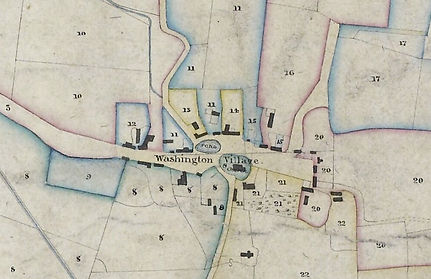
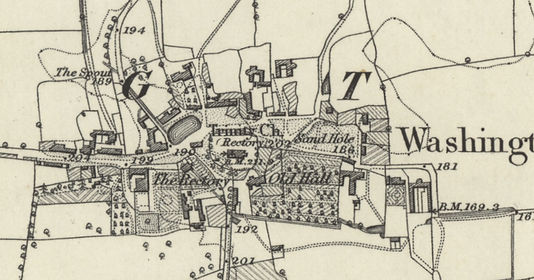
Both illustrations here depict Washington village between the 1840s and 1850s. The earlier, a tithe plan of the area, give an early insight into village life and the landowners of the area. The church was only a decade old when the tithe plan was illustrated. You will see the number 8, indicating much of the land here was Glebe ran by Revd. Bryan Sneyd Broughton. His second son also named Bryan was a pioneer settler of New Zealand in the mid 19th century. Two of his sons - the aforementioned Bryan and Thomas, died on HMS Orpheus. It's still the worst maritime disaster in New Zealand waters. (https://en.wikipedia.org/wiki/HMS_Orpheus_(1860)).
Otherwise, much of the village remains the same. The Washington Arms, beforehand the Commercial Hotel, was part of a longer house and garth. The village pond is also in situ, which in decades later was dried up and landscaped.
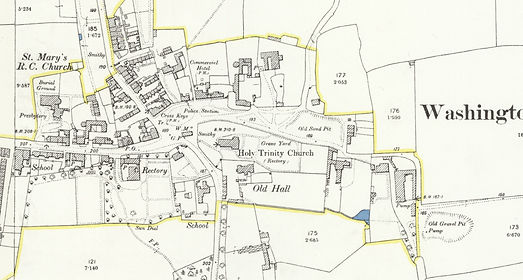
The 1890s map shows the village with the pond filled. The village periphery expanded to include terraces on the old Glebe land, presumably providing rental income to the parish. Another pub, the Bush Inn had also been built as well as a Wesleyan church.

The church in 2024
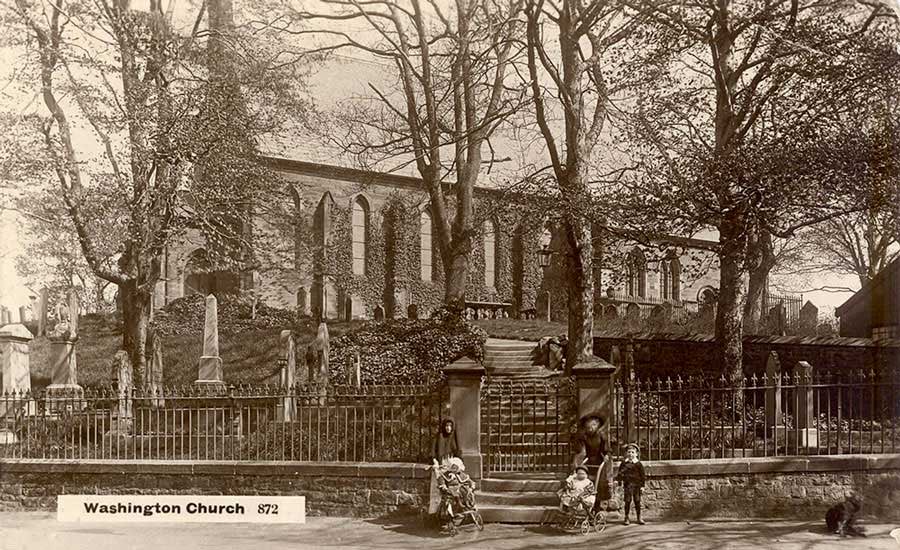
An undated postcard of the church, probably between the 1900s and 1920s. Source: Raggyspelk
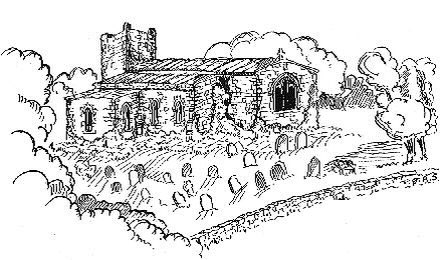
An impression of the former “Saxon” church. Source. http://washingtonlass.com/HolyTrinityChurchNew.html